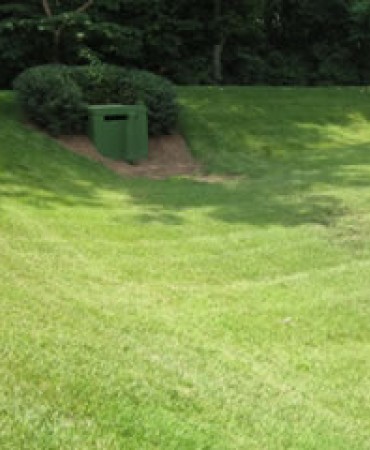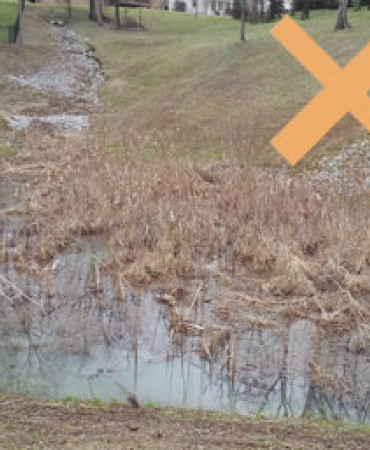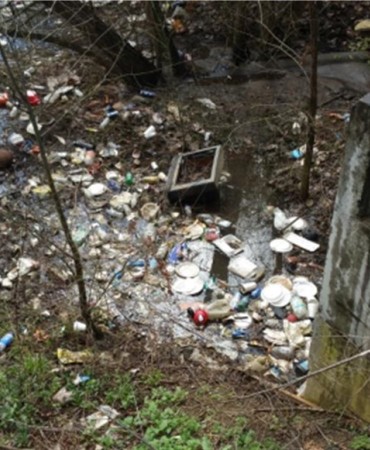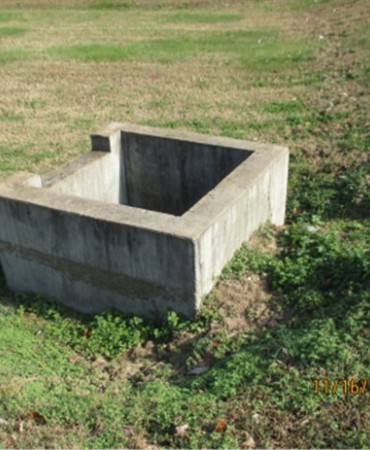Dry detention ponds are designed to temporarily store and slowly release stormwater. This prevents downstream flooding and allows sediment, nutrients, heavy metals and other pollutants to settle out.
Dry Detention Pond Flow Graphic
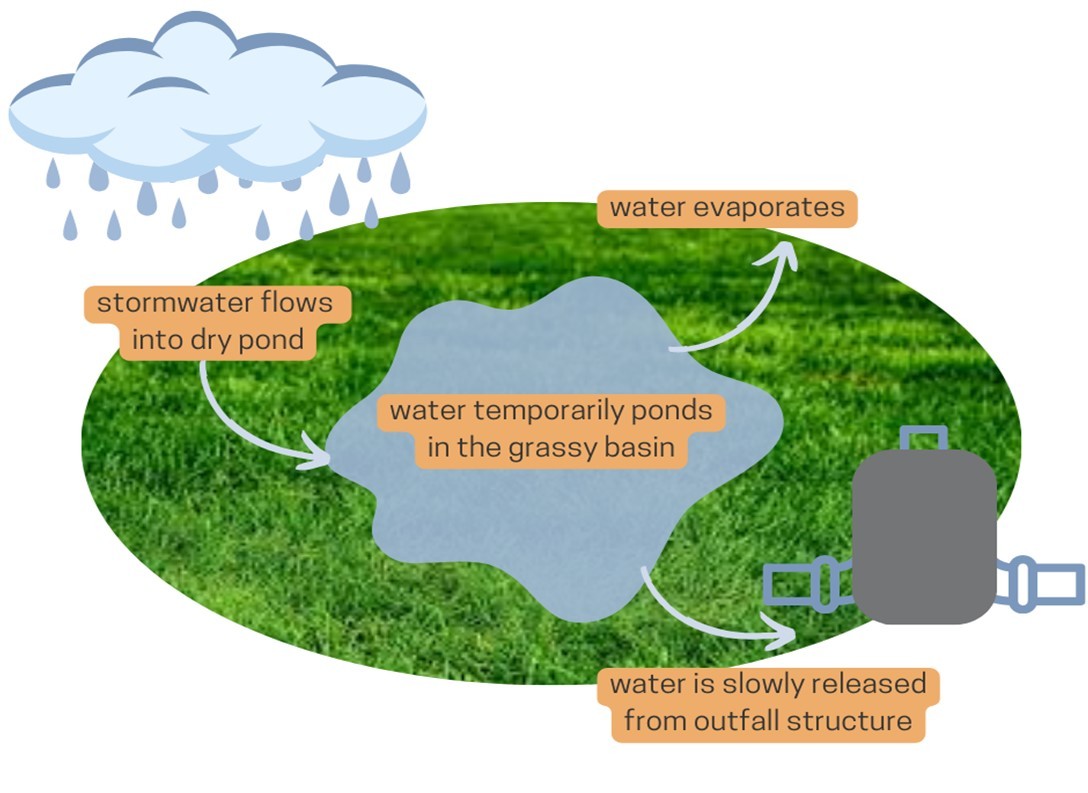
Stormwater temporarily ponds for less than 72 hours in the dry pond. This reduces the flow of stormwater runoff and the amount of pollutants going from the outfall structure into the receiving stream.
Maintenance
Property owners are responsible for inspecting and maintaining SCMs on their property.
Inspection and maintenance requirements for your specific SCM are filed with your property deed. These documents are available through the Metro Nashville Register of Deeds.
Typical Inspection and Maintenance Concerns
- Inspect the outlet and inlets to ensure there is no trash, sediment buildup, and/or vegetation growth that can cause blockages. Clean out the outlet and inlets, and repair any damage.
- Observe the pond after a large rainstorm to see if it is draining properly. Is it still wet after 72 hours? If so, slight re-grading of the pond may be necessary.
- Are there signs of erosion on the banks of the pond or in the ditches leading to or from the dry pond? Is the pond full of sediment?
- Is it overgrown with woody vegetation (trees or shrubs)? Vegetation should consist of a grass-dominant planting mix as there should be no trees and/or shrubs within the basin. To control vegetation, the basin should be mowed at least twice a year.
- If maintenance needs are identified during the inspection, ensure that service is performed in a timely manner to prevent larger problems from occurring in the future.
File Maintenance Report
File your Annual Inspection and Maintenance Report.

